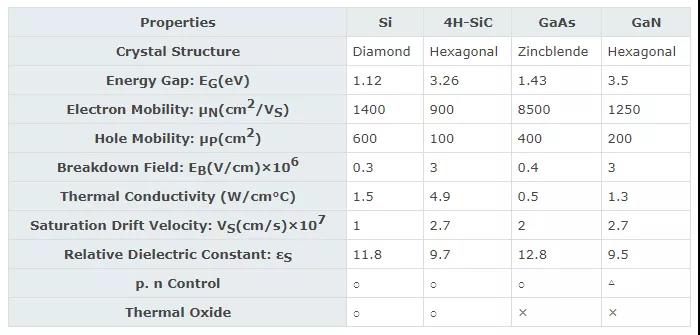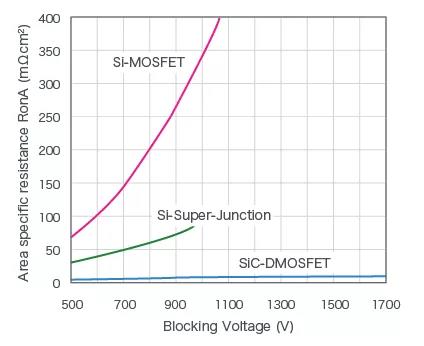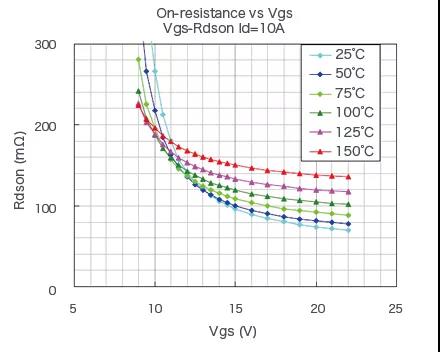
Support Team
Feedback:
support@nextpcb.com
SiC (Silicon Carbide) is a compound semiconductor material composed of Si (silicon) and C (carbon).
Not only the insulation breakdown field strength is 10 times that of Si, and the band gap is 3 times that of Si, but the necessary p-type and n-type can be controlled in a wide range during device fabrication, so it is considered to be a kind of beyond the limit of Si. Power device materials.
There are various polytypes (multiple crystals) in SiC, and their physical properties are also different.
For the production of power devices, 4H-SiC is most suitable.

The insulation breakdown field strength of SiC is 10 times that of Si. Therefore, compared with Si devices, a drift layer with a higher impurity concentration and a thinner thickness can be used to make a high withstand voltage power device of 600V to several thousandV.
The impedance of a high withstand voltage power device is mainly composed of the impedance of the drift layer. Therefore, a high withstand voltage device with a very low on-resistance per unit area can be obtained by using SiC.
Theoretically, for devices with the same withstand voltage, the resistance of the drift layer per unit area of SiC can be reduced to 1/300 of that of Si.
In Si materials, in order to improve the on-resistance increase caused by higher withstand voltage, minority carrier devices (bipolar transistors) such as IGBT (Insulated Gate Bipolar Transistor) are mainly used. Type device), but there is a problem of large switching loss, and the result is that the resulting heat will limit the high-frequency drive of the IGBT.
However, SiC materials can achieve high withstand voltage with majority carrier devices (Schottky barrier diodes and MOSFETs) of high-frequency device structure, thereby simultaneously achieving "high withstand voltage", "low on-resistance", and "high frequency". "These three characteristics.
In addition, the band gap is wider, three times that of Si, so SiC power devices can work stably even at high temperatures.
The higher the withstand voltage device in the Si material, the greater the on-resistance per unit area (increased by the ratio of about 2 to 2.5 power of the withstand voltage value). Therefore, IGBTs (Insulated Gate Bipolar) are mainly used for voltages above 600V. Type transistor).
The IGBT injects holes as minority carriers into the drift layer through conductivity modulation, so the on-resistance is smaller than that of the MOSFET, but at the same time, due to the accumulation of minority carriers, a tail current will be generated during Turn-off. This causes great switching losses.
The impedance of the drift layer of SiC devices is lower than that of Si devices, and high withstand voltage and low impedance can be achieved with MOSFETs without conducting conductivity modulation.
In addition, MOSFET does not generate tail current in principle, so when SiC-MOSFET is used to replace IGBT, switching loss can be significantly reduced, and the miniaturization of heat dissipation components can be realized.
In addition, SiC-MOSFETs can be driven under high-frequency conditions where IGBTs cannot work, so that the miniaturization of passive devices can also be achieved.
Compared with Si-MOSFETs of 600V~900V, SiC-MOSFETs have the advantages of small chip area (small package can be realized), and the recovery loss of the body diode is very small.
Mainly used in industrial machine power supplies, inverters or converters of high-efficiency power conditioners.
The dielectric breakdown field strength of SiC is 10 times that of Si, so it can achieve high withstand voltage with a low-impedance, thin-thick drift layer.
Therefore, under the same withstand voltage value, SiC can obtain a device with a lower standardized on-resistance (on-resistance per unit area).
For example, at 900V, the chip size of SiC-MOSFET only needs one-third of Si-MOSFET and one-tenth of SJ-MOSFET to achieve the same on-resistance.
Not only can low on-resistance be achieved in a small package, but also the gate charge Qg and junction capacitance can be reduced.
SJ-MOSFET has only 900V products, but SiC can easily achieve a withstand voltage above 1700V with a very low on-resistance.
Therefore, there is no need to adopt a bipolar device structure such as IGBT (the on-resistance becomes lower, the switching speed becomes slower), and a device with low on-resistance, high withstand voltage, and fast switching can be realized.

Unlike IGBT, SiC-MOSFET has no turn-on voltage, so low conduction loss can be achieved in a wide current range from small current to large current.
On the other hand, the on-resistance of Si-MOSFET at 150°C rises to more than twice that at room temperature. Unlike Si-MOSFET, SiC-MOSFET has a lower rise rate, so it is easy to thermally design, and the on-resistance at high temperature is also Very low.
4. Drive gate voltage and on-resistance
The drift layer impedance of SiC-MOSFET is lower than that of Si-MOSFET, but on the other hand, according to the current technology level, the mobility of the MOS channel part of SiC-MOSFET is relatively low, so the impedance of the channel part is higher than that of Si devices.
Therefore, the higher the gate voltage, the lower the on-resistance can be obtained (VCS=20V and above will gradually saturate).
If you use general IGBTs and Si-MOSFETs with a driving voltage of VGS=10~15V, the original low on-resistance performance of SiC cannot be displayed. Therefore, in order to obtain a sufficiently low on-resistance, it is recommended to use VGS=18V for driving.

Still, need help? Contact Us: support@nextpcb.com
Need a PCB or PCBA quote? Quote now